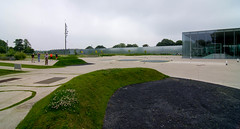
Submitted by: Greg Garner
An aseptic techniques course is a mandatory requirement for numerous health care professionals. And like with anything else which is made out of obligation, undertaking such a training program might not always be the most pleasurable of experiences. However, there are certain tips and tricks one can employ to make this course a fun experience for participants. Read below for a few tips on how to create a great aseptic techniques training course.
First and foremost, there are certain guidelines which any aseptic techniques course has to adhere to. There is no way of going around this. To create a great training program, you first have to make sure that it covers the most important aspects of the topic. For this purposes, make sure you check out guidelines offer by important health care institutions, such as the Center for Disease Control (CDC), the World Health Organization (WHO), or the Occupational Safety and Health Associations (OSHA).
Next, try to summarize all the necessary information in a way that would be appealing to participants. Try to keep every bit of knowledge that is relevant, and get rid of unnecessary details. There is no use in cluttering your training program with info and data that is not that important to the topic.
[youtube]http://www.youtube.com/watch?v=EuFFPAOaERM[/youtube]
Come up with a neat presentation. People are extremely visual creatures, so try to use graphs and images that will help participants more easily retain the information that is being presented to them. Try to make it as short as possible, without compromising the quality of the training material. People tend to get bored easily, so a presentation that goes on for hours would probably not be a very successful one.
Also, try to prepare a practical section for your aseptic techniques course. Theory is extremely important, but without adequate practice, it does not amount to much. You can use practical exercises as a way to break between theoretical presentations; this ensures that participants are engaged at all time.
For example, you can prepare an exercise where participants can learn how to appropriately put on gloves, or other pieces of protective equipment. Other practical demonstrations can involve showing participants how to effectively handle sterilized equipment and how to perform certain procedures in aseptic conditions.
At the end of the aseptic training course, you should offer your participants the opportunity to ask any questions they may have. This will ensure that there are no uncertainties left unanswered and that attendees have understood everything they need to know about aseptic techniques.
There are some of the most important tips one needs to keep in mind when creating a great aseptic techniques training course. This type of training program is mandatory for most health care professionals, but this does not mean it cannot be engaging and fun. Follow the easy pointers above and make sure your participants will both get the knowledge they need in order to perform their job responsibilities and have a good time doing it.
About the Author: For more information, please visit our
Aseptic Techniques Course
website.
Source:
isnare.com
Permanent Link:
isnare.com/?aid=1839752&ca=Education